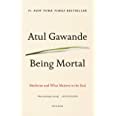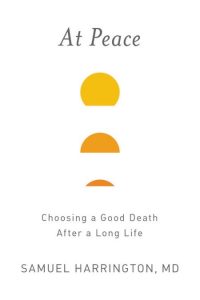The opening line of the internationally bestselling nonfiction book Being Mortal: Medicine and What Matters in the End by writer-physician Atul Gawande reads, “I learned about a lot of things in medical school, but mortality wasn’t one of them.” This sentence, in my view, sets the tone for his whole book. It’s the voice of a person sitting across from you in a pleasant living room, not that of an all-knowing doctor regally situated behind an imposing desk in his office, nor a lecturer talking down from a high lectern.
This approachability must account for the book’s bestsellerdom – it was on the New York Times’ bestseller list for more than eighty-two weeks after its publication in 2014 — despite the fact that its subject matter would be considered by most readers to be grim: aging, physical frailty, and dying. His message, in brief, is: Let’s face it, we’re all mortal; and the medical establishment has failed us in leading us to believe they can “fix” everything. At a certain point we must come to terms with and accept the inevitable, with courage, wisdom and grace.
Here, for example, is some typical straight talk from that man in the living room: “The battle of being mortal is the battle to maintain the integrity of one’s life—to avoid becoming so diminished or dissipated or subjugated that who you are becomes disconnected from who you were or who you want to be. Sickness and old age make the struggle hard enough. The professionals and institutions we turn to should not make it worse” (p. 141).
Almost everyone I know read Gawande’s book when it came out nearly ten years ago, and they remember it appreciatively. His subject, of course, is as perennial as taxes. However, I’ve learned recently, Being Mortal is clearly not the last word on the matter.
Writer-physician Samuel Harrington has written a book that in many ways echoes Gawande’s in its compassionate tone and content, but it also expands on it in down-to-earth, up-to-date, practical ways. At Peace: Choosing a Good Death After a Long Life (Hachette Books, 2018), like Being Mortal, straightforwardly addresses the limits and failures of American medicine, but it goes even further in explaining the hows: How, for example, different diseases lead to common causes of death, and how to recognize a terminal diagnosis.
The last third of At Peace deals with the practical aspects of planning for death — not everyone’s favorite living-room-conversation topic, I know, but one that we’re wise to face head-on, in our own hearts and minds and with our loved-ones. As Harrington states, “Why is advance care planning so important? Because without it you have ceded control of your end-of-life care to medical professionals dedicated to treatment at all cost. Under these circumstances you are likely to undergo futile treatment that is painful and that isolates you from your friends and family.”
Harrington’s important book is about exit strategies. It’s not about making the end of life good; it’s about making it less bad. It’s not about extending life, nor even about extending ‘high quality’ life. It’s about avoiding a painful dying process and futile medical care.
As he clearly states in his Introduction, this book is “not a philosophical treatise about what makes life worth living. It is simply a practical look at declining health, old age, progressive debility, and the practical choices that people can make to minimize the likelihood of the unconsidered death and to maximize the likelihood of a ‘better’ death.”
In sum, this book is about recognizing the limitations of modern medicine in extending life expectancy, the high physical and emotional cost of attempting to extend one’s life in the face of the inevitable, and recognizing when to face death “on your own terms and not someone else’s.”
In my view, At Peace: Choosing a Good Death After a Long Life deserves to be a bestseller too.
~ ~ ~ ~ ~ ~ ~ ~ ~ ~ ~
- At Peace is available on Amazon at: https://www.amazon.com/s?k=at+peace+choosing+a+good+death+after+a+long+life&i=stripbooks&crid=2ONXGOB4UO7F5&sprefix=At+Peace%3A+Choosing+%2Cstripbooks%2C158&ref=nb_sb_ss_fb_1_18
- I had the privilege of meeting author Sam Harrington briefly last month, when he and his wife Debbie Weil were visiting San Miguel de Allende. You can read my WOW interview with Debbie here: blog.bonnieleeblack.com/debbie-weil-on-purpose/ .


